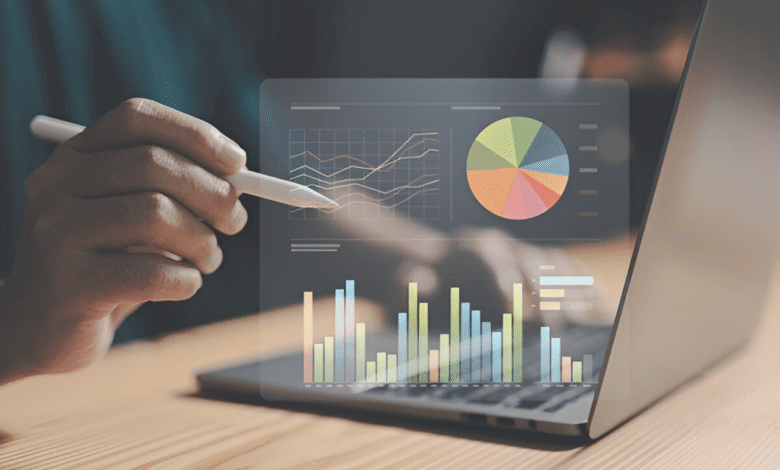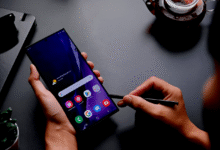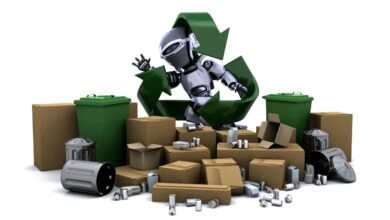How to Build a Marketing Funnel That Converts
Discover how to build a marketing funnel that converts leads into customers. Boost sales with proven strategies for each funnel stage.

A marketing funnel that converts is the key to turning strangers into loyal customers. It’s a strategic roadmap that guides potential buyers through every stage of their journey from first discovering your brand to making a purchase. Without an optimized Marketing Funnel, even the best products can get lost in the noise. Whether you’re selling physical goods, digital services, or SaaS solutions, a well-structured funnel ensures no lead slips through the cracks.
To build a marketing funnel that converts, you need more than just ads and landing pages you need a deep understanding of your audience’s pain points, desires, and decision-making process. This guide will walk you through each stage of the Marketing Funnel, from awareness to retention, with proven tactics to maximize engagement, nurture leads, and boost sales. By the end, you’ll have a clear blueprint for creating a Marketing Funnel that not only attracts prospects but turns them into paying customers.
How to Build a Marketing Funnel That Converts
Understanding the Marketing Funnel
A marketing funnel represents the customer’s journey, divided into key stages: awareness, interest, consideration, intent, and conversion. Each stage requires tailored content and strategies to move prospects closer to making a purchase.
Awareness Stage
Content Marketing That Sparks Discovery
Create educational, non-promotional content that addresses your audience’s fundamental questions and challenges. Blog posts, infographics, and short-form videos that answer “what is” or “how to” questions perform exceptionally well. For example, a fitness brand might publish “5 Signs You’re Overtraining” rather than pushing supplements upfront. SEO-optimized content ensures your solutions appear when prospects begin their research.
Social Media & Community Building
Platforms like Instagram, LinkedIn, and TikTok allow you to meet audiences where they already spend time. Share bite-sized tips, behind-the-scenes content, and engaging stories that build familiarity without being salesy. Participate in relevant discussions and forums (Reddit threads, Facebook Groups) to establish credibility organically.
Paid Advertising for Targeted Reach
While organic growth is valuable, strategic paid campaigns accelerate awareness. Use lookalike audiences and interest-based targeting to reach people similar to your best customers. Platforms like Facebook and Google Ads offer cost-effective options to test messaging before scaling. Retargeting pixels should be implemented early to track engaged visitors for future nurturing.
Lead Magnets That Capture Information
Offer free, high-value resources (e-books, templates, or mini-courses) in exchange for contact information. These should solve a specific, immediate problem like a “SEO Checklist for Beginners” from a marketing agency. This begins moving cold traffic into your nurturing system while providing tangible value upfront.
Interest Stage
Content That Educates and Builds Authority
Prospects in this stage crave valuable information, not sales pitches. Offer in-depth guides, how-to videos, and comparison content that helps them understand their options. Webinars and live Q&A sessions position your brand as an expert while allowing direct engagement. For example, a SaaS company might host a webinar on “How to Automate Your Sales Process,” subtly showcasing their product’s capabilities without hard selling.
Email Nurturing Sequences
A well-structured email sequence keeps your brand at the top of prospects’ minds. Drip campaigns should deliver gradual value starting with educational content, then introducing product benefits, and finally including customer success stories. Personalization, such as using the recipient’s name or referencing their browsing behavior, increases open rates and engagement.
Consideration & Intent Stage
Social Proof as Your Silent Salesperson
Case studies, testimonials, and user-generated content serve as powerful validation tools. Feature detailed success stories that mirror your ideal customer’s challenges and outcomes. Video testimonials from real customers carry particular weight, as they’re harder to fake and more emotionally compelling. For B2B offerings, include logos of recognizable clients to leverage the “halo effect” of trusted brands.
Risk Reversal Strategies
Prospects at this stage often hesitate due to perceived risk. Implement guarantees (money-back, satisfaction, or performance-based) to lower psychological barriers. Free trials, demo versions, or “test drive” options allow risk-free evaluation. For service-based businesses, offer audits or consultations to demonstrate value before asking for commitment.
Scarcity and Urgency Tactics
While these should be used ethically, well-implemented urgency triggers can nudge prospects toward decisions. Limited-time bonuses, countdown timers on offers, or inventory-based scarcity (“Only 3 spots left”) create fear of missing out (FOMO). The key is authenticity artificial scarcity damages trust when discovered.
Comparative Content That Positions You as the Best Choice
Create comparison guides that objectively showcase your advantages over competitors. Tools like comparison matrices or “vs.” pages help prospects justify choosing you. For complex purchases, offer side-by-side feature breakdowns or cost-benefit analyses. This content should educate rather than disparage competitors.
Conversion Stage
Streamlined Checkout Process
A complicated checkout is the #1 reason for abandoned carts. Reduce form fields, enable guest checkouts, and implement autofill options to create a frictionless purchasing experience. Progress indicators and multiple payment options (credit cards, PayPal, digital wallets) further boost completion rates.
Powerful Calls-to-Action (CTAs)
Weak CTAs kill conversions. Use action-driven language (“Get Instant Access,” “Claim Your Discount”) with contrasting colors that stand out. Place CTAs strategically above the fold, at the end of product descriptions, and in exit-intent popups to guide users toward the sale.
Social Proof & Urgency
Doubting prospects need validation. Display customer testimonials, trust badges (SSL, money-back guarantees), and real-time purchase notifications (“20 people bought this today”). Scarcity tactics (“Only 3 left!”) or time-sensitive discounts (“Offer expires in 2 hours”) push hesitant buyers to act immediately.
Upselling & Cross-Selling
Increase average order value by suggesting complementary products (“Frequently bought together”) or premium upgrades (“Get 50% more storage for $5”). Post-purchase upsells (via thank-you pages or email follow-ups) can further maximize revenue from converted customers.
Post-Conversion Retention
The funnel doesn’t end at checkout. Send order confirmations, delivery tracking, and a post-purchase email series to reinforce satisfaction. Include referral incentives or loyalty programs to turn one-time buyers into repeat customers.
Optimizing Your Funnel for Maximum Conversions
A/B Testing for Continuous Improvement
Every element of your funnel from email subject lines to checkout button colors impacts conversion rates. Implement systematic A/B testing to compare variations and identify what resonates best with your audience. Test headlines, CTA placements, pricing displays, and even page layouts. For instance, changing a single phrase in your hero section could boost conversions by 20%. Document winning variations and scale them across your funnel while maintaining a cycle of ongoing experimentation.
Analytics and Performance Tracking
You can’t optimize what you don’t measure. Use tools like Google Analytics, heatmaps, and session recordings to track user behavior at each funnel stage. Monitor key metrics such as bounce rates, time-on-page, and drop-off points to pinpoint leaks. For example, if 70% of users abandon their cart on the payment page, investigate whether it’s due to unexpected fees or a lack of trust signals. Data reveals where prospects disengage, allowing you to make targeted adjustments that plug revenue leaks.
Personalization for Higher Engagement
Generic messaging fails to convert in today’s competitive landscape. Leverage behavioral data to deliver personalized experiences dynamic website content that changes based on user demographics, retargeting ads that showcase previously viewed products, or segmented email campaigns tailored to purchase history.
Read More: Can Artificial Intelligence Replace Human Creativity? The U.S. Debate
Conclusion
Building a marketing funnel that converts is not a one-time task it’s an ongoing process of optimization and refinement. By understanding your audience’s journey and strategically guiding them from awareness to purchase, you create a seamless path that maximizes engagement and boosts sales. Whether through targeted content, personalized email sequences, or high-converting landing pages, each element of your Marketing Funnel plays a crucial role in turning prospects into loyal customers.
A well-designed marketing funnel that converts doesn’t just drive one-time sales it builds lasting relationships with your audience. By continuously testing, analyzing data, and adapting to customer behavior, you ensure your funnel remains effective in an ever-changing market. Start implementing these strategies today, and watch as your conversion rates climb, delivering sustainable growth for your business.
FAQs
What is a marketing funnel?
A marketing funnel is a step-by-step process that guides potential customers from awareness to purchase, optimizing conversions at each stage.
Why is a marketing funnel important?
It helps businesses systematically nurture leads, improve engagement, and increase sales by addressing customer needs at every phase.
How do I attract more leads at the top of the Marketing Funnel?
Use SEO, content marketing, and targeted ads to reach audiences searching for solutions related to your product.
What’s the best way to nurture leads?
Email campaigns, retargeting ads, and valuable free resources keep prospects engaged until they’re ready to buy.
How can I improve my funnel’s conversion rate?
Test different elements (CTAs, landing pages), personalize content, and streamline the checkout process for better results.












2 Comments